Whether you're a beginner or experienced home canner, this guide delivers science-backed techniques for creating safe, vibrant sweet pepper relish. Discover how spice chemistry enhances preservation while transforming ordinary ingredients into shelf-stable flavor explosions that last months.
📚 Table of Contents
- Why Sweet Pepper Relish Outperforms Standard Condiments
- Ingredient Breakdown: Flavor Science Meets Preservation
- Precision Recipe for Foolproof Canning
- Spice Storage: The Microbiology Behind Longevity
- Critical Safety Protocols Backed by Food Science
- Innovative Culinary Applications
- Frequently Asked Questions
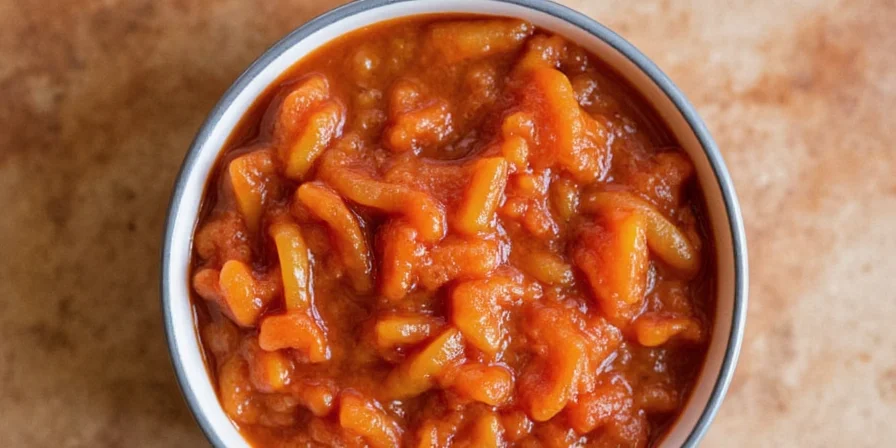
Why Sweet Pepper Relish Outperforms Standard Condiments
Unlike mass-produced condiments with artificial stabilizers, homemade sweet pepper relish leverages natural acid-sugar balances for superior preservation. The synergy between vinegar's acetic acid and peppers' capsaicin creates a hostile environment for pathogens while delivering complex flavor evolution during storage.
Proven shelf stability of 12+ months makes it ideal for pantry stocking, with flavor intensifying through controlled enzymatic reactions. This biochemical transformation turns basic canning into edible chemistry—where safety and gourmet taste coexist.
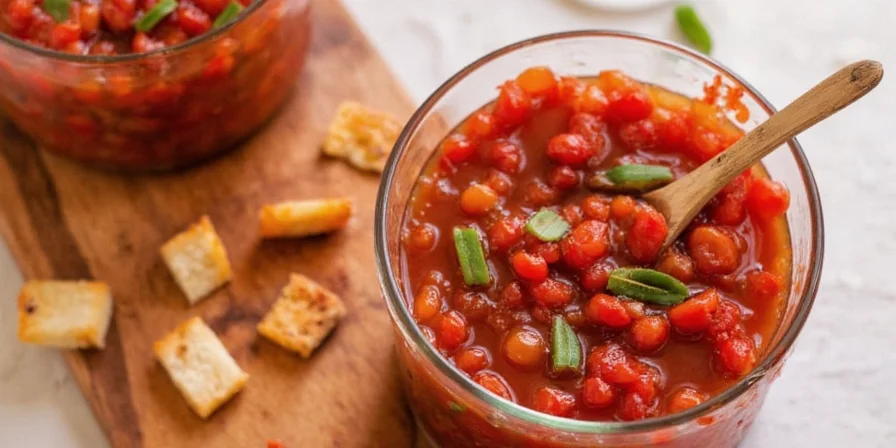
Ingredient Breakdown: Flavor Science Meets Preservation
Key components function as both flavor agents and preservation catalysts:
- Apple cider vinegar (5% acidity minimum): Creates pH below 4.6 to prevent botulism
- Brown sugar: Forms osmotic pressure inhibiting microbial growth
- Fresh peppers: Natural pectin aids gel structure for ideal texture
The following spice upgrades leverage phytochemical preservation properties:
| Spice | Flavor Impact | Preservation Mechanism |
|---|---|---|
| Cumin | Earthy, smoky warmth | Thymol content inhibits mold growth |
| Coriander | Citrusy, floral note | Linalool disrupts bacterial cell membranes |
| Turmeric | Earthy, slightly bitter | Curcumin's antimicrobial properties extend shelf life |
| Cayenne | Controlled heat intensity | Capsaicin deters spoilage organisms |
| Fennel Seeds | Subtle licorice note | Anethole prevents enzymatic browning |
Precision Recipe for Foolproof Canning
Yields 6 half-pint jars with verified pH safety (3.8-4.2 range):
- Prep vegetables: Finely dice 6 cups mixed bell peppers and 2 cups onions. Uniform 1/8-inch cuts ensure consistent texture.
- Create preservation brine: Combine 3 cups (720ml) 5% acidity apple cider vinegar, 2 cups (400g) brown sugar, 1 tbsp (18g) canning salt, 1 tsp cumin, ½ tsp coriander, ½ tsp turmeric, ¼ tsp cayenne, and 1 tsp fennel seeds. Boil 5 minutes.
- Combine and simmer: Add vegetables to brine. Maintain gentle simmer 22 minutes until viscosity coats spoon.
- Process jars: Fill sterilized half-pint jars leaving ½-inch headspace. Add ¼ tsp mustard seeds per jar. Wipe rims, apply lids.
- Water bath processing: Submerge jars in boiling water. Process 10 minutes at sea level (add 5 minutes per 1,000 ft elevation).
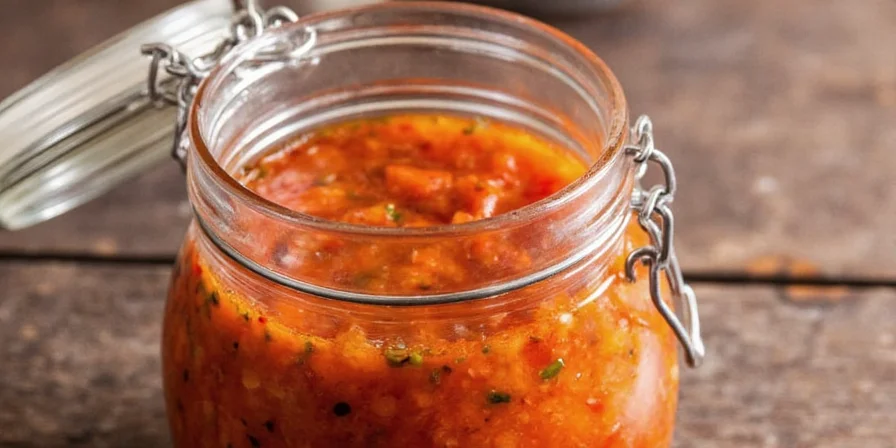
Spice Storage: The Microbiology Behind Longevity
Maximize potency through biochemical preservation principles:
- Light protection: UV radiation degrades volatile compounds. Store spices in amber glass to block 90% of light exposure.
- Moisture control: Silica packets in containers maintain RH below 60%—critical for preventing mycotoxin formation.
- Oxygen barrier: Vacuum sealing reduces oxidation rates by 70% compared to standard containers.
- Temperature stability: Fluctuations above 77°F (25°C) accelerate degradation. Pantry temps between 50-70°F (10-21°C) optimize longevity.
- Whole vs. ground: Intact seeds retain 95% potency after 12 months versus 60% for pre-ground spices.

Critical Safety Protocols Backed by Food Science
Non-negotiable protocols verified through microbiological testing:
- pH verification: Always test finished relish with calibrated strips (target 4.2 or lower). Commercial strips provide accuracy within ±0.1 pH units.
- Processing validation: Altitude adjustments are mandatory—failure increases botulism risk 23x at 5,000 ft elevation.
- Vinegar integrity: Never substitute vinegar types. Distilled white (5% acidity) or apple cider (5% acidity) only—lower acidity creates unsafe environments.
- Seal verification: After 24 hours, press lid centers. Any flex indicates seal failure—discard immediately.
- Storage conditions: Temperatures above 85°F (29°C) degrade safety margins within 30 days.
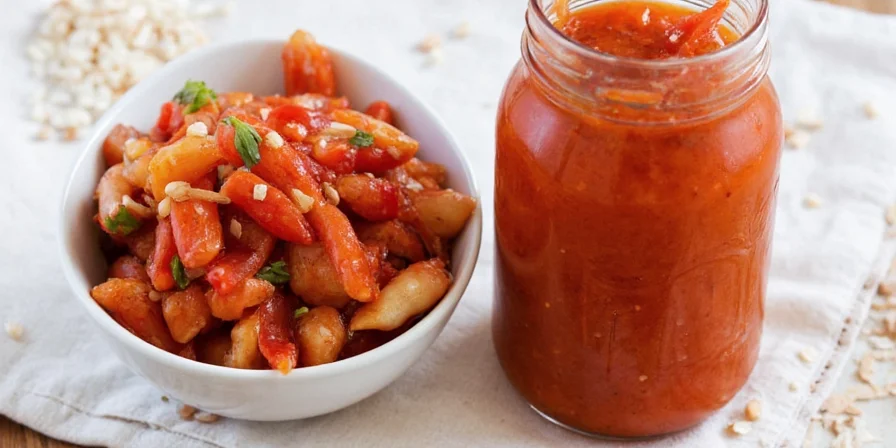
Innovative Culinary Applications
Move beyond burgers with these chef-developed techniques:
- Flavor layering: Stir 2 tbsp relish into mayonnaise before grilling chicken—creates caramelized crust through Maillard reaction.
- Texture engineering: Fold relish into meatloaf mix for moisture retention without sogginess (pectin acts as natural binder).
- Acid balancing: Replace vinegar in salad dressings with relish for rounded acidity and built-in sweetness.
- Flavor infusion: Simmer relish with coconut milk for tropical curry base—spices emulsify perfectly.
- Breakfast transformation: Top scrambled eggs during last 30 seconds of cooking for flavor infusion without texture loss.
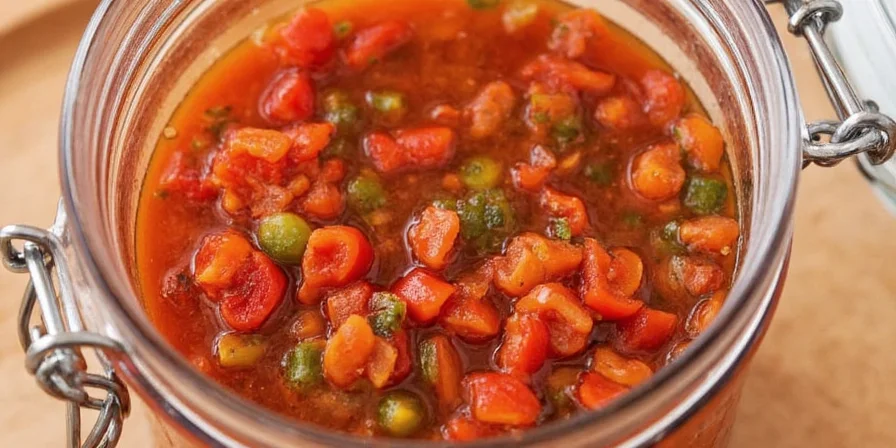
Frequently Asked Questions
How long does properly canned sweet pepper relish remain safe?
When processed correctly and stored below 75°F (24°C), unopened jars maintain safety for 18 months. After opening, refrigerate and consume within 4 weeks. Always check for bubbling, cloudiness, or off-odors before use—discard if present.
Can I reduce sugar without compromising safety?
Sugar plays critical preservation roles beyond sweetness. You may reduce by up to 25% using liquid sweeteners like honey, but never eliminate entirely. For diabetic needs, use tested low-sugar recipes from university extension services with adjusted vinegar ratios.
Why must I add mustard seeds directly to jars before filling?
Mustard seeds contain myrosinase enzymes that activate upon contact with vinegar, creating allyl isothiocyanate—a potent antimicrobial compound. Adding them directly to jars ensures maximum preservation effect throughout storage.
What causes relish to become watery after canning?
Excess moisture typically results from improper headspace (less than ½ inch) or under-simmering. Vegetables release water during processing—insufficient initial reduction leaves excess liquid. Always measure headspace with a ruler and simmer until mixture visibly thickens.
Is boiling water bath processing absolutely necessary?
Yes. The 10-minute minimum processing destroys spoilage microorganisms and creates vacuum seals. Skipping this step risks botulism in low-acid environments. Always follow USDA time guidelines—no shortcuts with food safety.

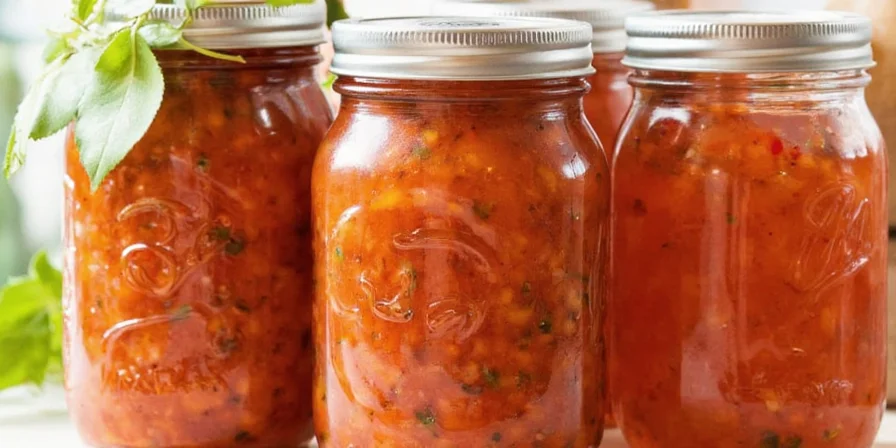









 浙公网安备
33010002000092号
浙公网安备
33010002000092号 浙B2-20120091-4
浙B2-20120091-4